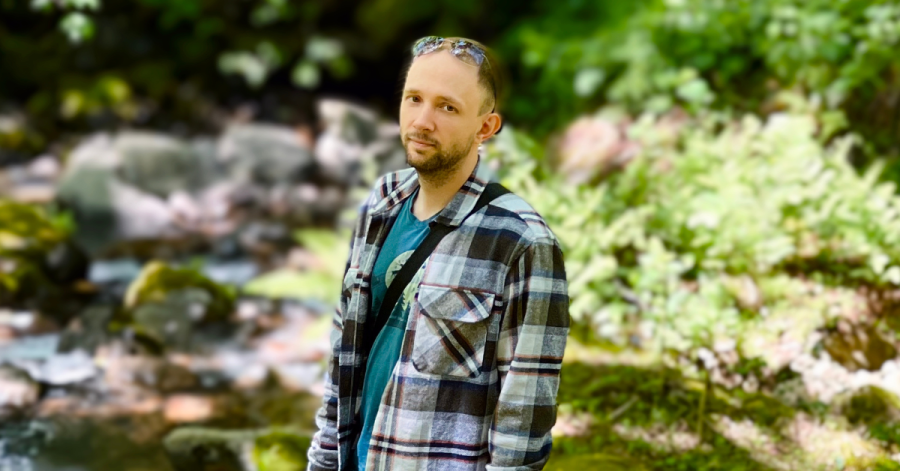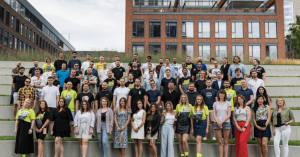The European video game industry saw steady growth in 2023, with a 5% increase in revenue compared to the previous year, according to the European Games Developer Federation (EGDF) and Video Games Europe (VGE). However, despite this statistic, opportunities for game developers are not evenly distributed. Factors such as studio size, resource availability, and regional economic conditions are crucial in determining the path developers choose.
For large, well-established studios, the opportunities are limitless, including easier access to publishers, investors, and global markets. In contrast, indie developers — especially those in emerging markets — face a unique set of challenges. To explore these barriers and how to overcome them, we spoke with Maxim Kiselev, co-author of Highfleet, a game published by the Australian publisher MicroProse, which has sold over 500,000 copies. Kiselev shares insights on how developers in emerging markets can navigate the industry’s challenges and carve their own paths to success.
What specific barriers do indie game developers in Central and Eastern Europe (CEE) face? How do these barriers compare to those in other regions?
With the globalisation of the gaming market, I wouldn’t say that Central and Eastern European (CEE) countries face any significant barriers specific only to them. Rather, I’d argue that they simply have fewer opportunities. For instance, in countries like Germany, the United Kingdom, the United States, and Canada, the culture and infrastructure around business incubators and crowdfunding are much more advanced than in CEE countries. This means that developers in those regions have more ways to secure funding for promising projects. However, even within the CEE region, the situation is not uniform. For example, all major crowdfunding platforms typically cater to the U.S. and Western Europe. Some platforms, such as Kickstarter, do not operate in certain CEE countries, even those within the European Union. Furthermore, almost none of the major international crowdfunding platforms offer opportunities for projects from CEE countries outside the European Union to secure funding. This creates additional challenges for developers in these regions, limiting their ability to reach a wider audience and access the necessary support for their ideas.
How would you assess the current state of the indie game development market in CEE compared to other global markets?
In my opinion, the game development market in CEE is, on the one hand, very strongly represented on the international stage, but, on the other hand, it’s important to recognize the uneven distribution of this market across the region. For instance, there are some countries that I’ve hardly heard anything about in terms of game development. However, if we look at Poland, for example, this Eastern European country has produced a large number of true indie hits, such as Frostpunk, This War of Mine, Manor Lords, Against the Storm, and many others. In fact, I’d say the Polish indie game development market is one of the strongest in the region. Another example that comes to mind is the Czech studio Warhorse Studios, with their game Kingdom Come: Deliverance. After its release, they were able to compete with AAA titles, though it started as a small team raising funds on Kickstarter.
What are the challenges and strategies involved in finding a publisher for an indie game in CEE? How difficult is this process?
If you don’t have any funding for development and only have an idea, finding a publisher and securing funds can be quite difficult. Crowdfunding is often not an option (as I mentioned earlier), and finding investors in these countries isn’t easy either. However, if you have a solid prototype, something you can showcase, and you’re managing things on your own — such as running a Twitter account or a group on social media — then, based on our personal experience, finding a publisher isn’t that difficult. Surprisingly, our small team didn’t even have to make much effort to search for publishers; they approached us themselves. I won’t name names, but we received offers from some well-known publishers, so much so that we actually had the luxury of choosing who we wanted to work with. Overall, it’s important to be open and transparent about your development process — share screenshots from the game, short video clips, and updates on what the team is working on. Engage with the community that forms around your game, encourage discussions, and answer questions. If you do this, it’s quite likely that publishers will find you on their own.
Is it possible for indie developers in CEE to scale their games without the help of a publisher? If so, how?
It depends on the team and the goals of the developers. If the team is large enough, has financial resources, and, most importantly, includes people with knowledge of the market and marketing, they can probably manage without a publisher. A good example of this is the Polish studio 11 bit studios. However, more often than not, an indie team consists of a few passionate enthusiasts who are driven by the idea of creating their dream game. Such teams usually have great ideas but often lack the financial resources to finish the project on their own. Equally important is that they might not want to get distracted by marketing and would rather focus purely on the creative process. In this case, it would be difficult to succeed without a publisher. From my own experience, working with a publisher left a positive impression—they took care of the marketing side without interfering with the creative aspects of our work, which we are very grateful for.
In your opinion, what are the main factors that contribute to the success of indie developers in CEE?
Don’t try to compete with global AAA projects by attempting to create your own Assassin’s Creed or Call of Duty. Another clone of an existing game will most likely fail, only because games from CEE countries usually have smaller budgets, making it hard to compete even with indie developers from countries like the U.S. It’s much more promising to create something unique, something of your own, and find your audience. Many indie hits can’t boast cutting-edge graphics, impressive special effects, or complex cinematic scenes, but all successful indie games have something unique about them, a certain charm that players come to love. In my opinion, the key factors for success are originality of the idea, attention to detail, and a clear understanding of the desires and interests of the audience you aim to attract.
What has been the biggest barrier you’ve faced in your indie game development journey, and what helped you overcome it?
A lack of experience. And by that, I mean a lack of experience in almost every area — estimating our own capabilities, development, testing, and marketing. We learned many things on the go, through trial and error. Sometimes months of hard work were thrown out the window, and we had to start again. Some might say this is a routine part of development, but I’m convinced that with the experience we have now, many of these mistakes could have been avoided. It’s hard to give advice on how to avoid such difficulties, because experience only comes through facing them. But if there’s anything that can help, it’s trying to learn not only from your own mistakes but from others’ as well. For example, during development, we sometimes reached out to other indie developers for advice and tips, and we made sure to listen to their opinions.
Another thing I’d highlight from my experience is the importance of letting people play your game at relatively early stages of development. Even if it’s just a few friends or relatives, their feedback can be incredibly valuable. They will often see things that you, with your “developer’s eyes,” might miss. This can help you make the right decisions early on, potentially saving you a lot of time later in development.








